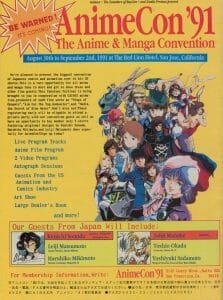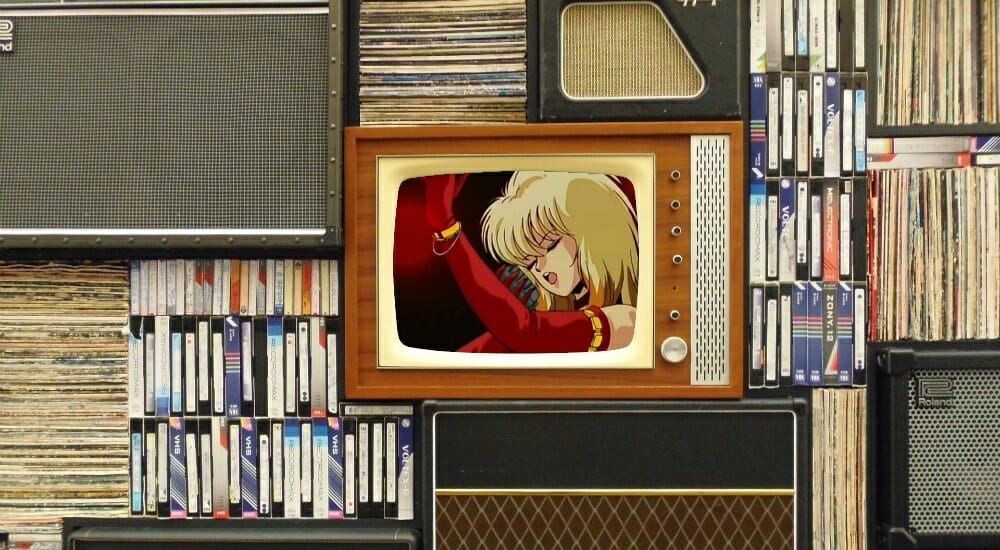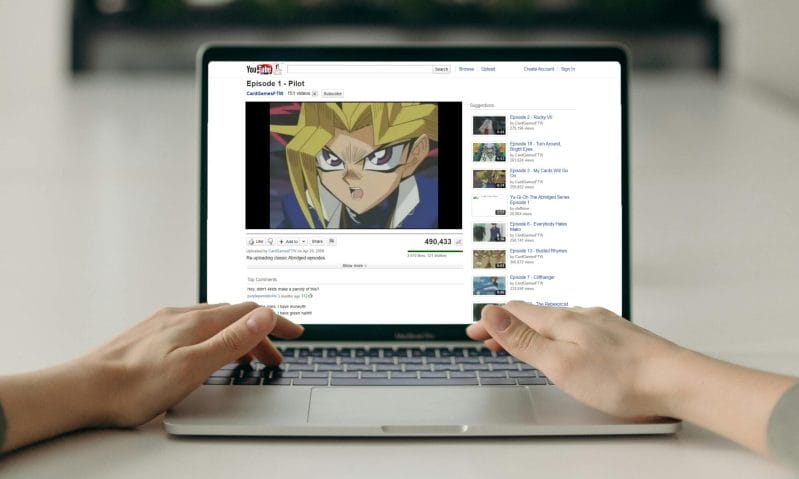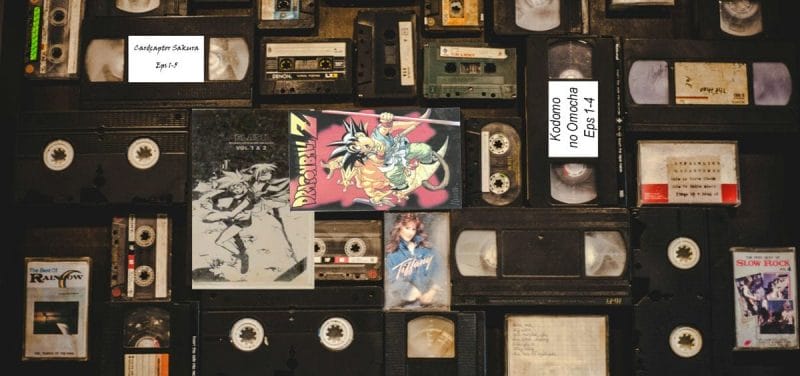Over the course of its history, Japan’s entertainment industry, particularly within the fields of manga and anime, has risen and fallen like waves upon the ocean. World War II, for example, altered the very way of life for the nation. Crises like the great burst of the Japanese Asset Bubble in 1992, meanwhile, saw countless lives destroyed not through artillery and destruction, but through economic ruin.
With each of these downturns, the nation found a new path forward, through its storytellers. Each new adversity presented a new path for the anime and manga industries and, with them, a new opportunity to evolve.
Reinventing The Medium
 In the ‘90s, the housing bubble burst, damaging Japan’s economy in ways that had not been seen before. By early 1992, the yen had plummeted, and the economy was in tatters. Jobs seemed to vanish overnight, and even to this day, Japan’s growth has been among the slowest of all developed nations. Businesses shuttered their doors, and the nation found itself unable to export food or other resources.
In the ‘90s, the housing bubble burst, damaging Japan’s economy in ways that had not been seen before. By early 1992, the yen had plummeted, and the economy was in tatters. Jobs seemed to vanish overnight, and even to this day, Japan’s growth has been among the slowest of all developed nations. Businesses shuttered their doors, and the nation found itself unable to export food or other resources.
With no stable careers on the horizon and a cripplingly slow growth period that loomed ahead, Japan as a nation had to look for new ways to create wealth. As a result, the country began exporting its cultural icons to the rest of the world. Anime and manga started to increase their visibility, as the properties were shopped worldwide. In 1988, AnimEigo began exploring this new market with their release of Metal Skin Panic: MADOX-01. In 1992, Houston-based A.D. Vision would step in to release Devil Hunter Yohko.
One by one, competitors began to enter the fray, building an environment that would allow anime conventions to not only appear, but flourish in the western fan community. Even to this day, this era holds sway in the greater fan community. Se shows like Dragon Ball Z and Sailor Moon, which first launched that started in the nineties, continue to bring fans in and expand have helped grow anime’s influence in the United States.
That’s to say nothing of the convention scene that would rise up during this period. Project A-Kon’s first event took place in 1990, and attracted fewer than 400 people. In the years that followed, the event has grown immeasurably, to become a landmark in and of itself. Today, A-Kon attracts more than thirty thousand people each year.
 Perhaps what’s more important, though, is the start of AnimeCon in 1991. While the first event had its issues, it proved to be an opening salvo in the burgeoning convention wars of the early nineties that grew the scene in California.
Perhaps what’s more important, though, is the start of AnimeCon in 1991. While the first event had its issues, it proved to be an opening salvo in the burgeoning convention wars of the early nineties that grew the scene in California.
Today, anime conventions can be found all across North America, each following in the footsteps of these storied forebears. It’s come to a point that even in comic book conventions, which previously shunned anime like unclean relics, wear anime’s influence on their sleeves. Fans cosplaying characters like Final Fantasy VII’s Cloud strife and Fairy Tail’s Erza Scarlet can be found wandering their halls at any given hour, and the anime fan culture has permeated every corner of convention centers across the country. It’s something this author has noticed both as an attendee, and as someone who’s ventured to conventions to sell his books.
In this era, necessity became a driving force for creativity and discovery. Attempts to find the next big thing were tried one after another, with time and effort being used to their fullest. Every success from the era changed the game, not only in regards to the ways anime and manga presented their stories, they also changed the stories being told on a major level, ushering in new genres, and new formats that still thrive today.
For now, the landscape seems murkier than ever, as it’s clear it will be a while before conventions become the norm again. Still, the appetite for new content continues to be sated, as services like like Crunchyroll and Webtoon are constantly updated with new episodes and shows.
New Voices
In the throes of oblivion, one begins to realize that the conventional wisdom no longer works. The same voices, the same formulas that advanced things to that point have grown distant from the voices of the present. Today, the future appears more uncertain than ever. In the midst of that unpredictability, though, one will find the perfect opportunities to break new ground.
Japan releases new series all the time. The convention scene continues to rise, and countless new properties are being developed with each passing season. Through it all, new voices are constantly given a chance to shine through publishers, events like the Tezuka Award, and through self-publishing venues. The industry is highly competitive, but it is still very healthy, as the overall culture allows for diversity.
The North American comics industry needs to address this. One of the biggest problems with ongoing comics is that they don’t have an act three. A lot of the classic Manga has a set beginning, middle and end, or at the very least, the longer lasting stories let the creators stay true to their vision, much like North America used to do. Newspaper dailies no longer exist, and unless published independently, creators often don’t tell new stories with their characters, which compromises the integrity of the stories presented.
The mainstream North American audience shrinks in size, as the remaining audience finds itself snared in a nostalgia trap, embracing the comfortable over the new, as their numbers shrink and shrivel with each passing year. While there’s something to be said about serving a fanbase, and Japan itself does this too – publishers have to realize that there comes a time when these old stories should lay fallow, so that new ones can take their place.

This becomes especially relevant when one considers that traditional publishing is shrinking. Despite this, though, as more avenues for authors open up , the largest players in the market (commonly called the “Big Five”) in publishing, continue to dig their heels into the turf. These entities, and by association the media companies that own them, still dominate the industry with more than 60% of all English-language book releases, continue to work in ways that stifle talent new and old alike, while throwing up hurdles to new voices who wish to join their ranks. With each new door that opens, be it self-publishing on Amazon, Kickstarter funding, or even working with smaller bespoke groups, more authors are finding the old ways to be little more than a relic of a distant past.
Indeed, one need only look at what individuals like Robert J. Sawyer or Charles de Lint _ are doing. Robert J. Sawyer recently released the Oppenheimer Alternative, keeping his digital rights, and published the book through medium sized publishers in both Canada and the United States. He has his own publishing strategy. Charles De Lint has his own strategies and was one of the few authors to keep all his digital rights and is re-releasing new material on his website.
The world isn’t the same place it was a century, a decade, or even a year ago. While there were parts of it that will be greatly missed, their decline presents new opportunities to bring about changes that the industry greatly needs. It’s a rare chance to let new voices tell stories in different ways that haven’t been done before, especially as media is able to blend and change as services like Youtube, Twitch, and Webtoon dominate public discourse.












